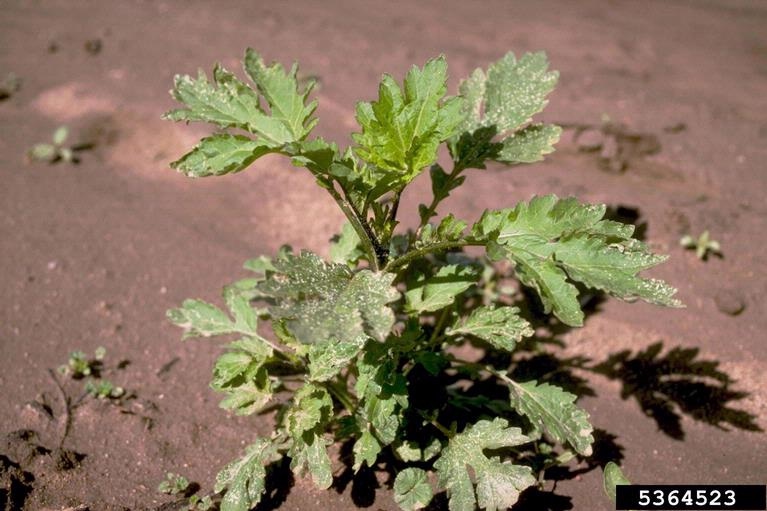June 12, 2015

Farmers who spot giant ragweed in their fields should apply a post-emergent herbicide before the infestation becomes unmanageable, even if no other weeds have appeared, two Purdue University plant scientists advise.
If left unchecked, giant ragweed could choke out emerging corn or soybean crops and even develop immunity to the herbicides used to control it, Bill Johnson, professor of botany and plant pathology, and Travis Legleiter, weed science program specialist, say in Purdue’s Pest and Crop online newsletter.
“A lack of residual herbicide at planting and farmers’ hesitation to spray when only the giant ragweed is at the appropriate height often leads to situations where post-emergent applications, regardless of the herbicide of choice, are being made to giant ragweed plants that are much larger than the labeled height,” the article states.
Giant ragweed sprouts early in the season and grows rapidly, blocking light from corn and soybean seedlings. Most manufacturers recommend applying post-emergent herbicide when giant ragweed is 4-6 inches tall.
“All too often we see where producers were reluctant to make post-emergent application to a 4-6 inch giant ragweed because of a lack of other weeds that size and the potential need for a second post-emergence application,” Johnson and Legleiter say. “Waiting for other weeds to emerge or for the soybean canopy to further develop will only allow the giant ragweed to continue to grow well past a manageable height and likely effect yields.”
The authors say identifying and controlling giant ragweed is especially important as planting season comes to a close. Fields with a history of ragweed infestation are particularly vulnerable.
“As farmers and consultants continue or begin to scout their fields, keep in mind that if giant ragweed is present among smaller weeds, that it should drive the decision for making a post-emergence herbicide application,” Johnson and Legleiter say.
Read the full article about controlling giant ragweed.
 You might also like:
You might also like:
Detect crop stress with thermal imaging
You May Also Like




